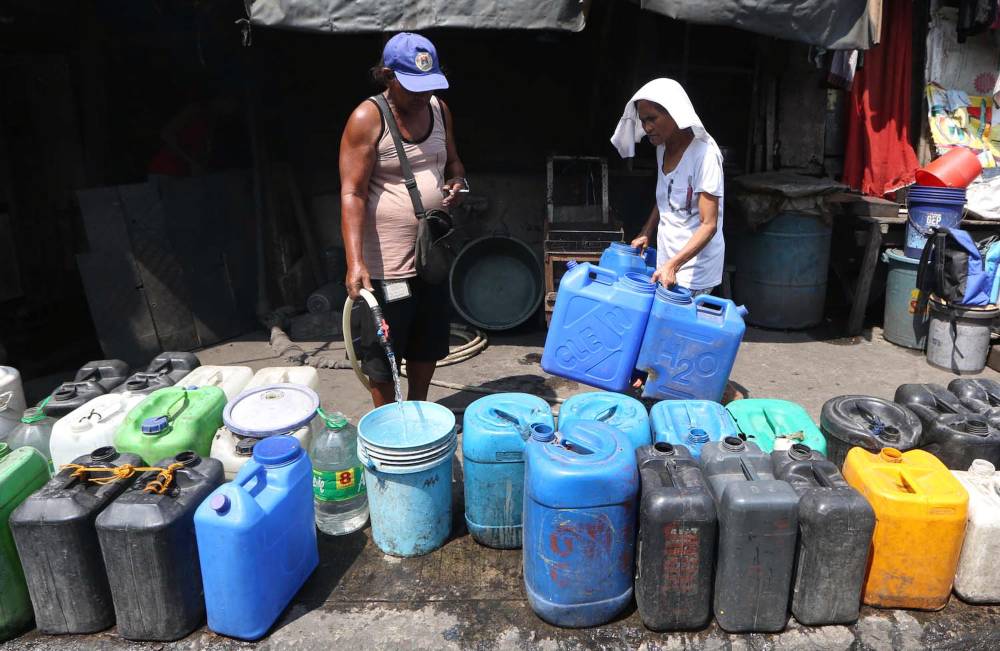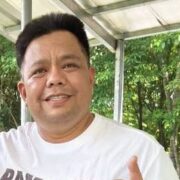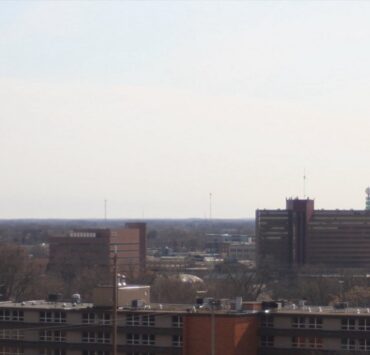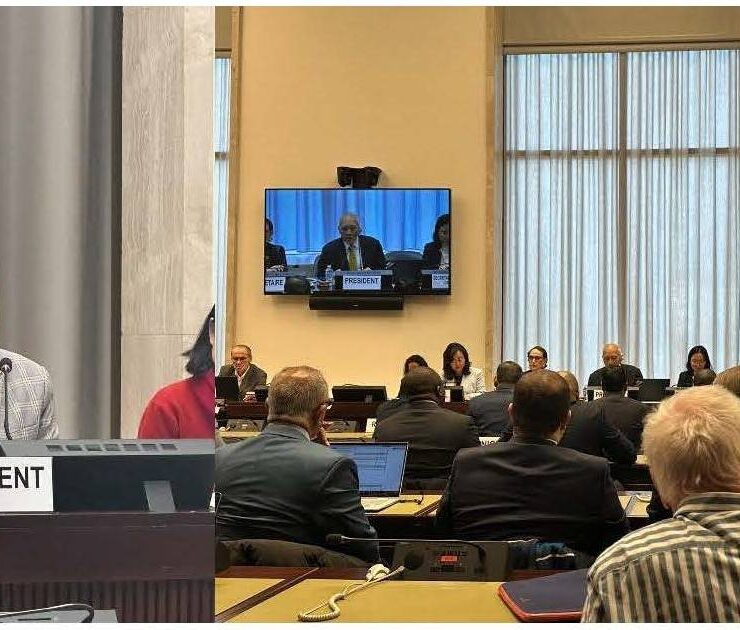Parched: 2B people need access to clean water, sanitation

The sixth Sustainable Development Goal (SDG) in the United Nations’ (UN) 2030 Agenda focuses on ensuring the availability and sustainable management of water and sanitation for all. With water and basic sanitation being at the core of several other issues and goals related to sustainability and further progress—such as ending hunger and poverty, promoting good health and well-being, and protecting the environment—SDG 6 and what it stresses in particular are perhaps the core of sustainable development as a whole.
But in the midst of climate change, overexploitation, and pollution, the challenges to achieving SDG 6 have become all the more severe. Despite its critical importance, the UN has stated that as of 2024, none of the SDG 6 targets are on track to be met by 2030. In 2022, over 2 billion people around the world had no access to safely managed drinking water, and over 3 billion lacked access to safely managed sanitation.
With the increasing significance of clean water and sanitation across the globe, and the pressing matter of improving the situation before it grows even more severe, we can take a look at various practices of water sustainability and sanitation around the world to help boost our pace and stay on track.
Finland at top spot
Finland, which currently holds the top spot in the SDG Index Rank out of 166 countries according to the Sustainable Development Report 2024, has achieved most of the target indicators for the SDG and is able to stay on track or maintain them.
The country has its own International Water Strategy, which was revised nine years after its inception in 2009 to better suit the 2030 Agenda. It now focuses on Finland’s international objectives and activities related to water and is grouped into three pillars: water for sustainable development, which aims to secure and protect water resources and ensure their quality; water for the people, which aims to provide safe water supply and sanitation services to all; and water for peace, which aims to prevent conflicts through transboundary water cooperation and promote global water security.
According to Finland’s official strategy document from 2018, some common means for implementing the program include “strengthening and enabling multistakeholder collaboration between the public and private sectors and civil society,” “enabling international education and work opportunities for water-sector professionals,” and “developing, packaging and commercializing water sector innovations and solutions for global markets.”
Supplementary to the strategy is the Finland Water Stewardship Plan, which started in January 2023 and is set to end in December 2025. According to the UN’s official website, the action’s main areas of focus include committing priority sectors to water stewardship, advancing fair water footprints and water stewardship in trade and development policy and projects, and providing research, development, and innovation funding for “themes linked to priority footprints and associated development needs.”
Sweden’s solution
For Sweden, which currently takes the second highest spot in the global SDG ranking, most indicators for SDG 6 are also on track or maintained, but progress with regard to the population using at least basic sanitation services is stagnating.
One practice relating to water sustainability in the country is the unique water purification developed by the Swedish company Järven Ecotech, which involves the use of floating walls, or baffles, to slow down the flow of water and allow it to stay longer in a dam or basin. This process gives enough time for the particles in the water to sink to the bottom, improving overall sedimentation and purification. As it is easy to install, designed to not damage waterproofing membranes, and can increase retention time at low costs, this solution can be used for all kinds of dams and facilities.
Sweden is also home to facilities and plants that aid in the SDG’s sustainability. Käppalaverket, an underground facility situated in the northeastern part of Stockholm, purifies around 50 million cubic meters of wastewater from households, schools, industries, offices, and hospitals every year, subsequently releasing purified water back to the Baltic Sea following the process.
There is also the nonprofit Stockholm International Water Institute, a Swedish organization that seeks to spread awareness on water management, acting as advocates and advisers that, according to its website, “create knowledge, develop capacity, and offer policy advice to countries, communities, and companies.” The organization is behind the world’s leading water conference, World Water Week, as well as the international Stockholm Junior Water Prize competition to encourage the youth to help solve water-related issues.
Philippines: 92nd out of 166
In contrast to these countries, the Philippines, which ranks 92nd out of 166 countries as of this year, still faces major hurdles to clean water and sanitation for all, with progress on SDG 6 categorized as mostly stagnating or is still facing challenges.
According to the World Bank Group in 2023, only 48 percent of the Philippine population received safely managed or piped water services, while approximately 63 percent had access to safely managed sanitation services or proper human waste collection, treatment, and disposal.
The country’s water problems have prodded President Marcos to propose the creation of a Department of Water Resources (DWR), which he cited as a priority agenda in his second State of the Nation Address.
In December 2023, House Bill No. 9663 or the National Water Resources Act, which would create the DWR and the Water Regulatory Commission, was approved on second reading at the House of Representatives. In August 2024, 22 senators signed a committee report endorsing as well the DWR and the commission.
The DWR is set to act as the primary government entity responsible for the development and management of the country’s water resources. It will also be responsible for determining the optimal allocation and use of water for domestic and municipal supply, sanitation, irrigation, hydropower, industry, navigation, flood management, and recreation, as well as planning and policy formation for water accessibility and improved sanitation services.
The proposed Water Regulatory Commission, on the other hand, will be an independent, quasi-judicial regulatory body with overall authority over public and private service providers supplying water, including suppliers to subdivisions, as well as sewerage, septage treatment, and disposal services.
In 2021, the National Economic and Development Authority released the Philippine Water Supply and Sanitation Master Plan (PWSSMP), which serves as a national action plan geared toward achieving universal access to safe and sustainable water supply and sanitation by 2030. As stated by former Socioeconomic Planning Secretary Karl Kendrick Chua, the PWSSMP aims to provide safe and disaster-proof water supply and sanitation services for all.
To properly accomplish its goals, the PWSSMP introduced an eight-key reform agenda, consisting of the following: establishing effective water supply and sanitation sector institutions, strengthening the regulatory environment, creating and ensuring effective water supply and sanitation services, balancing water supply and demand, building climate resilience, enabling access to financing, managing data and information to determine baseline and gaps of investments, and driving research and development in the sector.
Outside of the government’s plans, the US registered nonprofit organization Planet Water Foundation has also been active in the country since 2010, working to provide access to safe drinking water to those in need. The foundation has implemented over 410 clean water projects and provided access to clean and sanitized water to some 830,000 people since the start of its operations in the country, and has also installed over 350 AquaTower water filtration systems in elementary schools across the Philippines. It has deployed its AquaBlock Emergency Water Systems in response to natural disasters such as Typhoon “Odette” (Rai) and Typhoon “Rolly” (Goni) and the Taal volcanic eruption, to provide clean water to those impacted by calamities.
The foundation is at present focusing on clean water projects in Baguio, Camarines Sur, Cebu, Eastern Samar and Northern Samar, Leyte, and Quezon.
ACCESS TO WATER IN PH
97.6 percent
Percentage of families with an improved source of drinking water in 2022, according to the 2022 Annual Poverty Indicators Survey of the Philippine Statistics Authority (PSA)
48 percent
Percentage of the population in the Philippines that uses a safely managed drinking water service, according to data from WHO and Unicef
84 percent
Percentage of families that had basic sanitation service level or used an improved sanitation facility not shared with another household in 2022 (PSA)
63 percent
Percentage of the population in the Philippines that uses a safely managed sanitation service (WHO-Unicef)
10.8 percent
Percentage of families that had a limited service level or used an improved sanitation facility but shared with two or more households in 2022 (PSA)
82 percent
Percentage of the population in the Philippines that has a handwashing facility with soap and water available at home in 2022 (WHO-Unicef)
145,990 mcm/year
Amount of overall water resources potential of the country, measured in cubic meters per year (mcm/year), according to the Philippine Water Supply and Sanitation Master Plan by Neda
THE GLOBAL WATER SITUATION
2.2 billion
Number of people without access to safely managed drinking water in 2022, according to the United Nations (UN)
3.5 billion
Number of people who lacked access to safely managed sanitation in 2022 (UN)
2 billion
Number of people who lacked handwashing facilities with soap and water at home in 2022, according to the World Health Organization (WHO)
653 million
Number of people who had no handwashing facilities in 2022 (UN)
73 percent
Percentage of the world’s population that uses a safely managed drinking water service in 2022, according to data from the WHO and the United Nations Children’s Fund (Unicef) through the Joint Monitoring Programme for Water Supply, Sanitation and Hygiene
57 percent
The global progress score in implementing integrated water resources management in 2023, which is short of the 2030 target of 91 to 100 percent, according to the UN Statistics Division
58 percent
Percentage of the world’s domestic wastewater that is safely treated in 2022, according to data from the WHO and the United Nations Human Settlements Programme (UN-Habitat)
Sources: Inquirer archives, planet-water.org, pna.gov.ph, neda.gov.ph, worldbank.org, dashboards.sdgindex.org, siwi.org, smartcitysweden.com, um.fi, sdgs.un.org





















